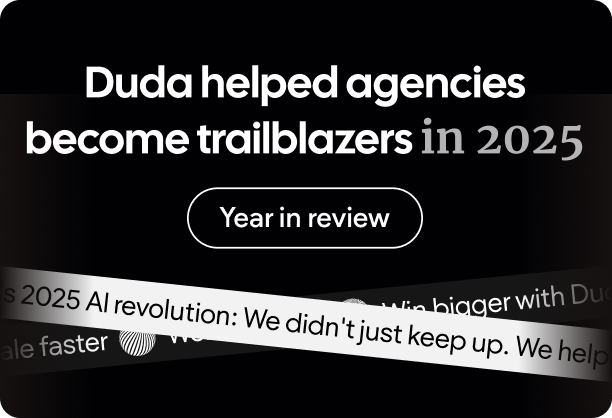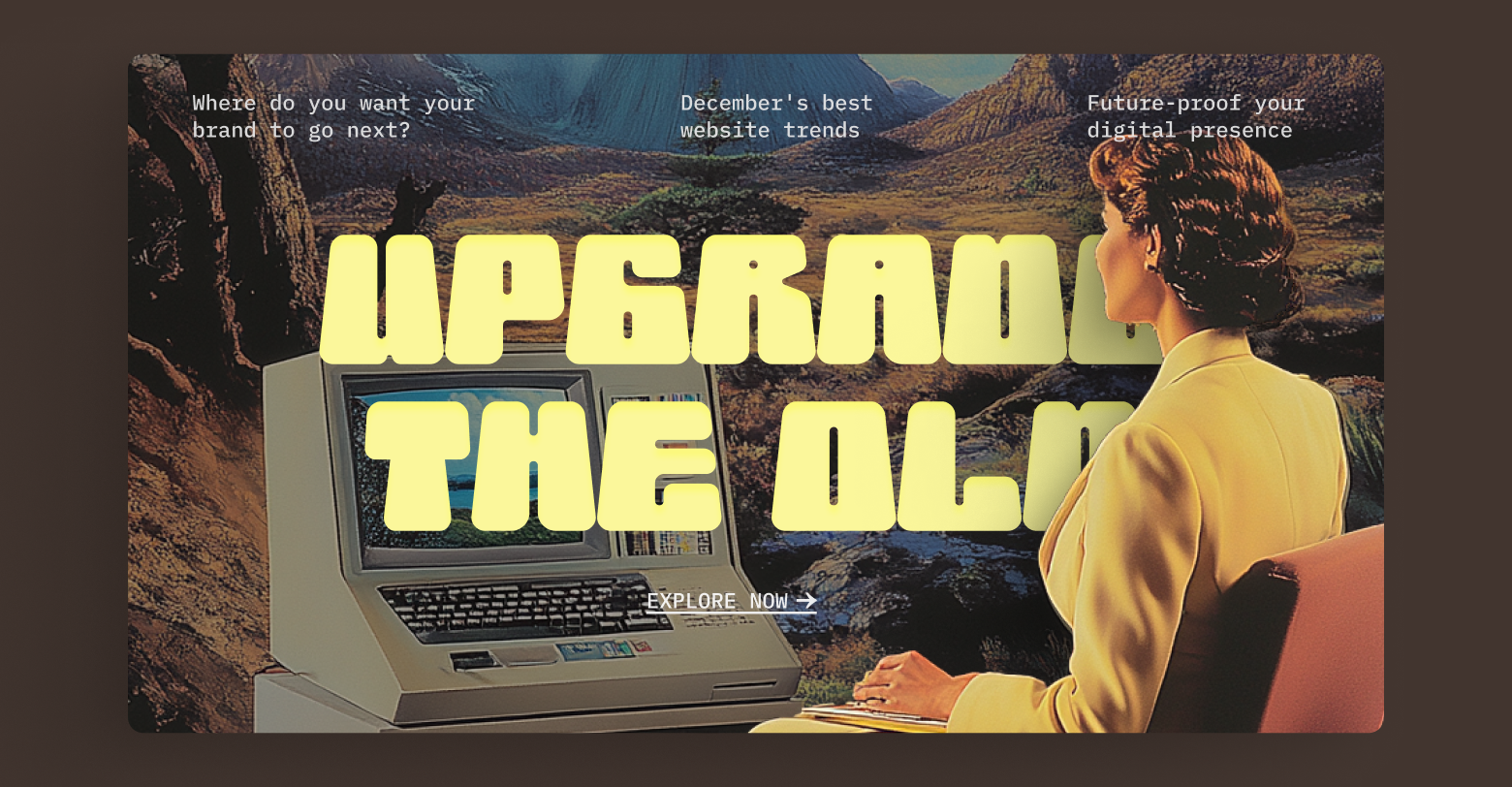Digital marketing agencies are constantly seeking new ways to provide more value to their clients, while simultaneously developing sustainable revenue streams. One often-overlooked opportunity lies in the websites these agencies have already sold.
To skip to the point, agencies should be selling design refreshes to their clients periodically. This is a service that benefits both the agency and their clients in profound ways. Let’s explore exactly why that is, and why design refreshes deserve a permanent place in your service catalog.
The evolution of consumer expectations
Today's digital landscape evolves at an unprecedented pace. What looked modern and engaging just two years ago might appear dated and uninspiring today. This rapid evolution isn't merely aesthetic – it reflects fundamental shifts in user behavior and expectations. Consider how mobile-first design has transformed from a nice-to-have feature to an absolute necessity, or how the rise of voice search has influenced navigation patterns and content organization.
New, AI-first internet browsers like The Browser Company’s “Dia” project, currently in development, hint at even greater transformations for web designs down the road.
The business case for regular refreshes
Website refreshes aren't just about keeping up with design trends – they're about maintaining competitive advantage. Research shows that
94% of first impressions are design-related, and
75% of users judge a company's credibility based on their website's design. When a website begins to show its age, it doesn't just look outdated – it actively erodes trust and diminishes conversion rates.
Think of website design like retail store maintenance. Just as brick-and-mortar stores regularly update their layouts, lighting, and displays to remain attractive and functional, websites need periodic rejuvenation to stay effective. This isn't about change for change's sake – it's about maintaining optimal performance in a dynamic digital marketplace.
The technical imperative
Beyond aesthetics, regular website refreshes provide crucial technical benefits. Each refresh presents an opportunity to:
- Implement performance optimizations that improve loading speeds and user experience
- Update security measures to protect against evolving cyber threats
- Ensure compatibility with the latest browsers and devices
- Incorporate new technologies that can enhance functionality and user engagement
These technical improvements directly impact key performance metrics like bounce rates, time on site, and conversion rates – metrics that directly affect your clients' bottom line.
Some platforms, like Duda, do handle infrastructure in a centralized way—meaning there’s no need to worry about security or performance optimizations. Those happen automatically. However, even platforms like that evolve. We continue to release new widgets, for instance, that could enhance the performance and/or appearance of your client’s sites.
Create a predictable revenue stream
From an agency perspective, website refreshes offer an excellent opportunity to create predictable, recurring revenue. Instead of relying solely on new client acquisition or project-based work, you can build a stable foundation of scheduled refreshes that provide consistent income throughout the year.
This approach also deepens client relationships. Regular refreshes require ongoing communication and strategy discussions, positioning your agency as a long-term partner rather than a one-time vendor. This enhanced relationship often leads to additional service opportunities and stronger client retention.
A compelling ROI for clients
When presenting website refreshes to clients, focus on the return on investment. A well-executed refresh can:
- Increase conversion rates by aligning with current user expectations
- Improve search engine rankings through better technical performance
- Reduce bounce rates by providing a more engaging user experience
- Strengthen brand perception through modern, professional design
- Generate renewed interest from existing customers
- Provide opportunities for improved functionality and features
By quantifying these benefits and tracking improvements after each refresh, you can build a compelling case for making website updates a regular part of your clients' digital strategy.
Some agencies may stick their nose up at the second point, that a design refresh can improve search performance. However, it’s worth taking a look back at how aggressive Google’s Core updates have been in recent years. In the rapidly transforming search landscape we currently operate within, sometimes the best thing you can do for your clients is to totally overhaul their site. After all, Google themselves claims to want the
freshest, highest quality content possible.
Structuring your service
Consider offering website refreshes as part of a tiered service model. This might include:
- Annual comprehensive redesigns that address major structural and strategic changes
- Quarterly updates focusing on specific sections or features
- Monthly maintenance that includes minor design tweaks and content updates
This tiered approach allows clients to choose a level of service that matches their needs and budget while providing your agency with various entry points for the service.
If you’re already charging for maintenance, this will fit right into your pricing scheme. Consider an entirely different industry for a moment; gyms. Planet Fitness sells their product via a monthly subscription and an annual “maintenance fee.” Translating that to the web, that would be a monthly hosting fee and an occasional maintenance fee.
Implementation best practices
To successfully integrate website refreshes into your service offerings, consider these key practices:
Develop a systematic approach to evaluating websites and identifying improvement opportunities. This might include regular audits of user behavior, performance metrics, and competitive analysis.
Create a clear process for gathering client feedback and incorporating it into the refresh strategy. This ensures that updates align with business objectives and maintain brand consistency.
Build a portfolio of successful refreshes that demonstrate concrete improvements in key metrics. This evidence-based approach makes it easier to sell the service to new and existing clients.
Maintain detailed documentation of each refresh, including the rationale behind changes and their impact on business outcomes. This creates a valuable resource for future updates and helps justify the ongoing investment.
Looking forward
As digital technology continues to evolve, the importance of regular website updates will only increase. New technologies like artificial intelligence, augmented reality, and advanced personalization are already changing how users interact with websites. Regular refreshes ensure your clients stay ahead of these trends and maintain their competitive edge.
The key to success lies in positioning website refreshes not as an optional expense but as a crucial investment in digital presence and business growth. By demonstrating the clear connection between regular updates and business performance, you can make website refreshes an integral part of your agency's service offering and your clients' digital strategy.
Remember, in the digital world, standing still means falling behind. By offering regular website refreshes, you're not just selling a service – you're providing your clients with a pathway to sustained digital success while building a more stable and profitable agency business model.







